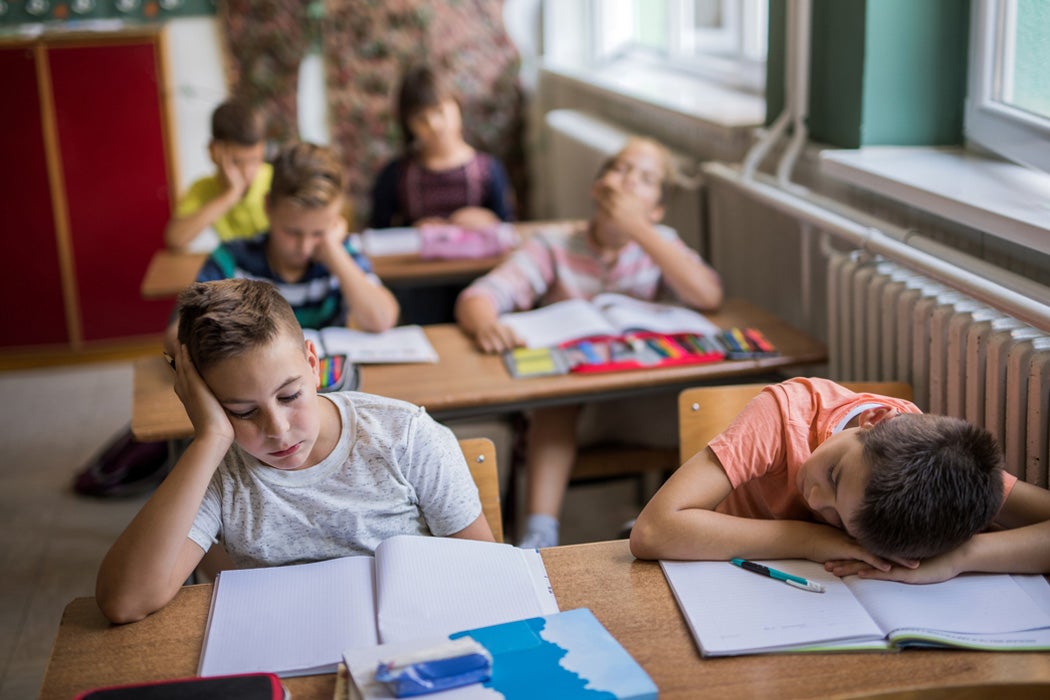If you have kids in middle school, or ever went to middle school yourself, it might not surprise you to learn that a lot of kids in those grades are bored. In 1991, human development scholar Reed W. Larson and psychologist Maryse H. Richards tried to figure out why that is.
Larson and Richards chose a random sample of fifth to ninth graders from Chicago-area schools, ending up with 392 participants. The students carried pagers, which signaled them at semi-random times between 7:30 am and 9:30 pm. When the pager went off, the students filled out forms that asked what they were doing and how they felt. Among other things, they had to rate their boredom level on a scale that ran from “very bored” to “very excited.”
One conclusion of the research was that schoolwork is, indeed, frequently boring. The single activity students most often found boring was homework, followed closely by classwork. Overall, the average student reported feeling bored thirty-two percent of the time they were doing schoolwork. Within the school day, listening to another student proved to be the most boring activity. After that came listening to the teacher and reading. The least boring was sports and exercise, followed by lab and group work, and then talking with the teacher.
That said, kids were also bored quite a lot outside of school as well. Overall, they reported boredom an average of twenty-three percent of the time when they weren’t in class or doing homework. Students were bored more than a quarter of the time when they were doing extracurriculars or creative activities, listening to music, or watching television. The least-boring activity proved to be “public leisure,” which included hanging out at the mall. (Of course, in 1991 social media didn’t exist, and video games apparently didn’t warrant their own category.)
The students’ explanations for their boredom varied by setting. If they were bored doing schoolwork, they tended to report that the activity they were doing was dull or unpleasant. (Sample comment: “Because math is dumb.”) Outside of school hours, on the other hand, those who were bored typically blamed having nothing to do or no one to hang out with.
Larson and Richards discovered, however, that individual students who were often bored during schoolwork tended to also be bored in other contexts. They write that “students who are bored in school are not people who have something tremendously exciting they would rather be doing.”
Get Our Newsletter
It’s not clear why some students were more prone to boredom than others. Larson and Richards didn’t find correlations between student boredom and other traits, including gender, social class, depression, self-esteem, or anger.
On the hopeful side, however, the paper suggests there’s a light at the end of the boredom tunnel—after rising between fifth and seventh grade, rates of boredom both in and out of school dropped significantly in ninth grade. So the key to defeating boredom for some kids may be simply making it through middle school.







